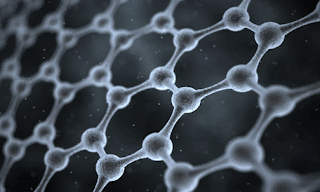Week 6: BioTech + Art
In this week’s discussion about biotechnology and art, Professor
Vesna discussed the benefits these two fields have on our society and discussed
Joe Davis’ importance to the field. Davis, a pioneer in the field, was one of
the first to work with genes and bacteria and see how sounds and light affected
a bacteria’s response to a stimulus. As the science is rapidly advancing
allowing for scientists to mutate living organisms, the mutations can sometimes
create beautiful results.
 Jens Hauser, a Paris-based Bio-art curator, claimed
bio-tech isn’t just “about using actual scientific techniques:
creating hybrids and manipulating live organisms” (Hauser). When looking at
some of the artistic pieces that bio-art produces, it may seem like some Frankenstein/Avant-Garde
type stuff. Although unique and different, bio-tech and art have combined to
create some truly amazing breakthroughs with genetic construction and expanding
on the possibilities of what organisms can really be.
Jens Hauser, a Paris-based Bio-art curator, claimed
bio-tech isn’t just “about using actual scientific techniques:
creating hybrids and manipulating live organisms” (Hauser). When looking at
some of the artistic pieces that bio-art produces, it may seem like some Frankenstein/Avant-Garde
type stuff. Although unique and different, bio-tech and art have combined to
create some truly amazing breakthroughs with genetic construction and expanding
on the possibilities of what organisms can really be.
Ruth West posed some
questions regarding the bio-tech and art fields and what the limits are for the
scientists and artists. In response to her question of whether there should be
limits to human creativity, I say no. I believe there are moral boundaries that
these experts should recognize, but I also believe that creative minds are what
push our civilization forward and show us what is and isn’t possible within a
living organism.
Dauerer,
Verena. "Making 'BioArt' a Cultural Practice | The Japan Times." Japan
Times RSS. N.p., 30 July 2010. Web. 09 May 2016.
Dohnalkova,
Alice. "2015 BioArt Winners." Faseb. N.p., n.d. Web. 8 May
2016.
Green,
Joanne. "Networked_Performance — Biotech Art Workshop [Skopje]." NetworkedPerformance
RSS. N.p., 25 Sept. 2010. Photo. Web. 09 May 2016.
Miranda, Carolina A. "Weird Science:
Biotechnology as Art Form." ARTnews. N.p., 18 Mar. 13. Web. 09 May
2016.
Vesna, Victoria. “5 BioArt pt4” Lecture. YouTube.
Uconlineprogram, 17 May. 2015. Web. 3 May. 2016.




I like how you focused on the beauty of mutation and the idea of formulating new organisms. As well as how you answered the question and defied what the results should be. The images also tie back into what you are talking about.
ReplyDeleteSean,
ReplyDeleteI like how you related biotechnology and art to the fictitious creature Frankenstein. I believe this comparison represents the current state of biotechnology and art; a hobby that seems so far fetched that it will provide no benefit to society. Additionally, I too feel that there should be no limit to the creativity for these artists; however, they need to limit the extent of their ideas, as some concepts can truly pose an issue for the progress of society. You said that the experts should recognize moral boundaries, but how far would they push these boundaries if they feel they are on the verge of something new? I think this want, the desire to be the first to discover/create something, may become a detriment for society.
Sean,
ReplyDeleteI liked your comment on how there should not be limitations to human creativity. As you stated, some of the most influential discoveries of all time came from pushing boundaries and seeing how far we can go. Moral boundaries, however are a different story. I believe that there should always be moral boundaries so that there can be a regard for human rights and welfare. Anyways, great post and good luck with your endeavors.
I like your post overall, and especially the disagreement with the implementation of limitations on human creativity. But you said there are some moral boundaries that should be adhered to, what are you referring to. Just a bit conflicting with your previous sentence when you say there shouldn't be boundaries, but there are..? What kind of boundaries are you talking about?
ReplyDeleteI think we should talk more about the ethical parameters of genetic engineering
ReplyDelete